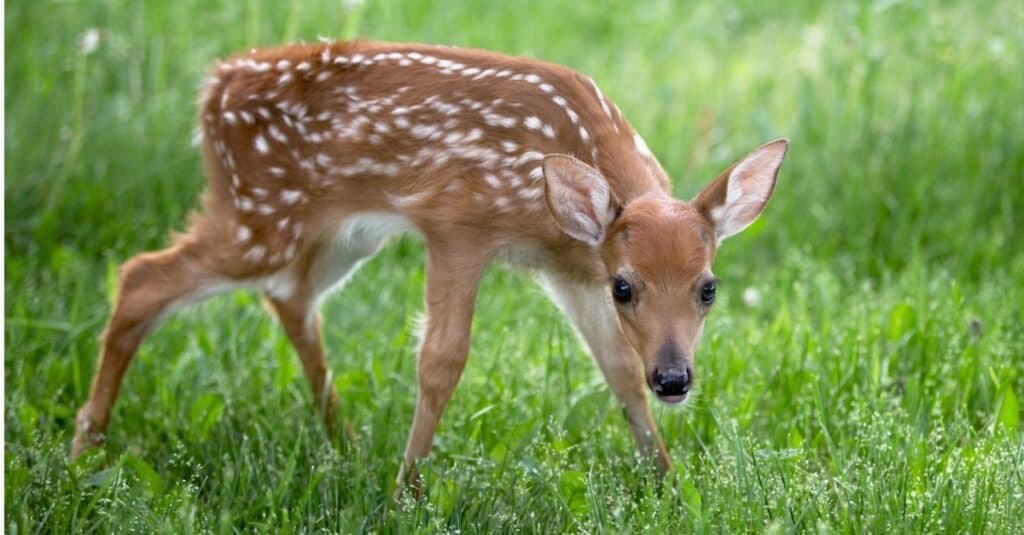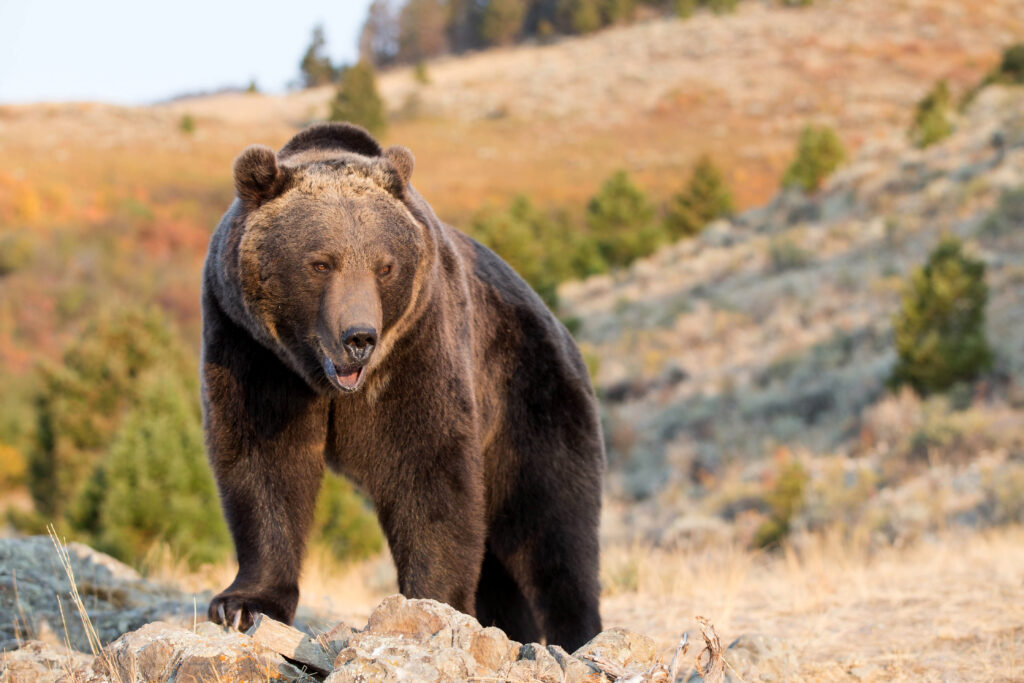Some of the largest animals have been caught in Missouri. One of the most common animals in Missouri is the whitetail deer. In Missouri, there are two Boone and Crocket Club whitetail records, the largest typical whitetail deer and the largest non-typical whitetail deer. Missouri also holds the record for the largest non-typical whitetail deer in the world.
Keep reading to discover the largest whitetail deer caught in Missouri and fun facts about other animals in Missouri.
The Largest Whitetail Deer Caught in Missouri
In Missouri, the largest typical whitetail deer caught scored 205. Larry W. Gibson caught this massive whitetail deer in 1971, but it’s now owned by Bass Pro Shops. It’s the largest typical whitetail deer in the state by nearly 5 points. The largest non-typical whitetail deer caught in Missouri scored an impressive 333 7/8. It was picked up in 1981 and is now owned by the Missouri Department of Conservation. It was considered a ghost and picked up near downtown St. Louis. During firearm deer season, Dave Beckman spotted antlers, however, it was on private property so he contacted Michael Hellend. The deer died of natural causes and had only been dead for a few days before being picked up.

The largest non-typical whitetail deer scored 333 7/8.
©Tom Reichner/Shutterstock.com
About Whitetail Deer
Whitetail deer, also known as Virginia deer, are medium-sized deer. They are found throughout North, South, and Central America. These unique deer belong to the Cervidae family. They are interesting animals found throughout the world. Follow along to learn more about whitetail deer including their appearance and size, diet, and distribution.
Appearance And Size
Most whitetail deer look alike, however, they vary on size depending on their region. However, most whitetail deer have reddish-brown coats in the spring and summer. Their coats change color and fall throughout winter. Interestingly, you can tell if a whitetail deer is young or old depending on the length of their snout. Older deer also have grayer coats. Although rare, some whitetail deer are entirely white. They are found in New York because of conservation efforts. Like their name suggests, whitetail deer have white under their tails.
While most male whitetail deer weigh between 150 to 300 pounds, hunters have recorded larger deer weighing over 400 pounds. Whitetail deer in the Florida Keys are a lot smaller. They weigh about 77 to 110 pounds, but 55-pound females aren’t uncommon.

Whitetail deer in the Florida Keys are small, sometimes weighing as little as 55 pounds.
©iStock.com/Lynn_Bystrom
Diet
Whitetail deer eat nearly anything. They commonly eat legumes and other plants. Their diet varies depending on where they live. For example, whitetail deer in desert regions eat cacti. Apart from grass, whitetail deer also consume nuts and fruits. Interestingly, they have strong multi-chambered stomachs which help them digest plants that can harm humans like poison ivy and mushrooms. Although not very common, sometimes whitetail deer lack calcium. To get enough calcium, they will sometimes chew on the bones of dead animals.
Distribution
There are at least 26 subspecies of whitetail deer found throughout North, Central, and South America. About 17 of the 26 live in North America. Whitetail deer live in a wide variety of habitats including forests, prairies, and deserts. Although whitetail deer aren’t native to Europe or the Caribbean, they’ve been introduced. A steady population remains in Brdy, a range of hills in the Czech Republic.
Predators
Whitetail deer have multiple predators. The most common natural predators are jaguars, American alligators, cougars, and wolves. Fawns are more vulnerable than adult whitetail deer. Animals that prey on fawns and vulnerable whitetail deer include bobcats, packs of wolves, grizzly bears, coyotes, and black bears. Although whitetail deer have many predators, they protect themselves by breathing heavily and fleeing. When they breathe heavily, it tells other whitetail deer in the area there is danger.

Grizzly bears are a common predator of the whitetail deer.
©Dennis W Donohue/Shutterstock.com
Animals In Missouri
There are hundreds of animal species in Missouri. Some of the most common animals are listed below.
Bobcats
A common mammal, although rarely spotted by humans, is the bobcat. They are medium-sized wild cats native to North America. This wild cat has a short stubby tail and is about 18.7–49.2 inches long. They are excellent climbers and run up to 30 mph, but walk between 2 to 7 mph. Bobcats in Missouri mainly live in heavy forests and timbered swamps.
Great Blue Herons
Another animal in Missouri is the great blue heron, a tall wading bird that lives in open water and wetlands throughout North, South, and Central America. Great blue herons can weigh up to 10 pounds but is usually 4 to 7.9 pounds. These birds mainly consume fish and amphibians. You can find great blue herons throughout Missouri in lakes, rivers, and ponds.
North American River Otters
North American river otters are river otters that can weigh up to 30 pounds. They are members of the subfamily Lutrinae and live on land and in the water. North American river otters mainly eat fish like great blue herons but also consume amphibians. They are also very playful and frequently wrestle with each other. You can find these river otters in lakes, ponds, and rivers in Missouri bordered by forests and woodlands.
Where Is St. Louis, Missouri Located On A Map?
Missouri is located in the mid-west region of the United States. It is bordered by Nebraska to the northwest, Iowa to the north, Illinois to the east, Kentucky to the southeast, Tennesee and Arkansas to the south, Oklahoma to the southwest, and Kansas to the west. St. Louis is in the eastern portion of the state and lies on the west bank of the Mississippi River.
Thank you for reading! Have some feedback for us? Contact the AZ Animals editorial team.








